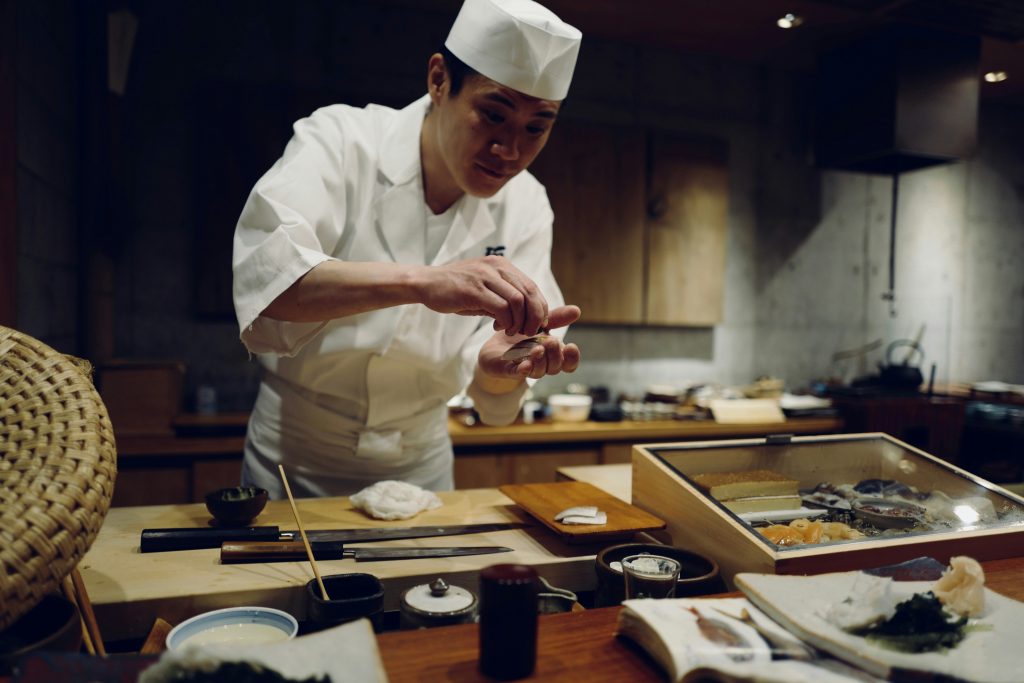
Kitchen Kind #9
Kanji Kohanda
Kaiseki (懐石) or kaiseki-ryōri (懐石料理)
Kanji Kohanda has always been excited by food. As a child he learned to appreciate the flavours and intricacies of kaiseki with his family, and later how kaiseki is a feeling as much as it is food. These family moments have driven the love and passion for sake that forms the foundation for his business, Nomu Saketen.

What meal or ingredient speaks of love to you and why?
Kaiseki (懐石) or kaiseki-ryōri (懐石料理) is a traditional multi-course Japanese dinner. The term also refers to the collection of skills and techniques that allow the preparation of such meals and is analogous to Western haute cuisine.
I remember as a child, my parents used to take me to kaiseki restaurants as a treat. This is where my love of food and my journey with sake began; until then I thought sake was a granddad’s drink, warm, harsh, and disgusting.
What I loved most about kaiseki was the simplicity and at the same time complexity of seasonal cooking; often there are six to ten counter seats facing the chefs so you can experience the food from start to finish. You see the effort these chefs put into each dish, including the eye opening presentation. Depending on the restaurant and the time of year you will be presented with somewhere between seven to fourteen dishes, all made with seasonal produce and ingredients that follow the four Japanese seasons of nature.
I believe that one of the best ways to enjoy food is to let the ingredient shine by itself. Keep it simple, don’t over season, don’t overdo it – I want to be able to taste the main ingredient.
The level of understanding and skill required to make the best of every ingredient; how to cut it, how to cook it, and even how to present it is something I hadn’t thought of until experiencing kaiseki.

A kaiseki restaurant in Kobe, Mr Miki I still rate as one of the best dining experiences I’ve ever had. Head chef owner Mr Miki explained one day they always serve “Osuimono”, which is a clear soup dish, as the third course. The dashi stock is extremely light and clean but so full of umami so if you are not paying attention you may think “oh chef has forgotten to season the soup” but this is done purposefully. He makes the soup with minimal seasoning so he can check the customers’ reactions; judging if they are critics or food professionals, or have just come in for a casual meal. If they are just in for a hang out he can relax and let them enjoy their time in the restaurant, but if they stop and start to process the flavour of the soup then he has to concentrate on every single dish so that it is perfect.
I was mind blown when I heard how he interacts with his customers without even asking about the dish. Monitoring the speed of each guest and gauging when to serve the next dish, again without asking. It’s only counter service and some people are watching every single move, one of them was me! Everything has to be well presented, no time for poking your nose (joke).
My favourite part of kaiseki is the delicious matched sakes they serve with the food. The way sake enhances the food, and compliments the flavours, by the end of the meal I always feel very, very happy and inspired. I believe it is very unique and special what kaiseki is and I would encourage people when they are visiting Japan, to spend a little money for that full experience.
You wouldn’t neglect making guests feel at home, and kaiseki makes you feel so welcome and this is a feeling I always try to achieve.
Turnip Media recognises the Wurundjeri as traditional owners of the land on which we live and work.
We pay respect to their elders, past, present and emerging.